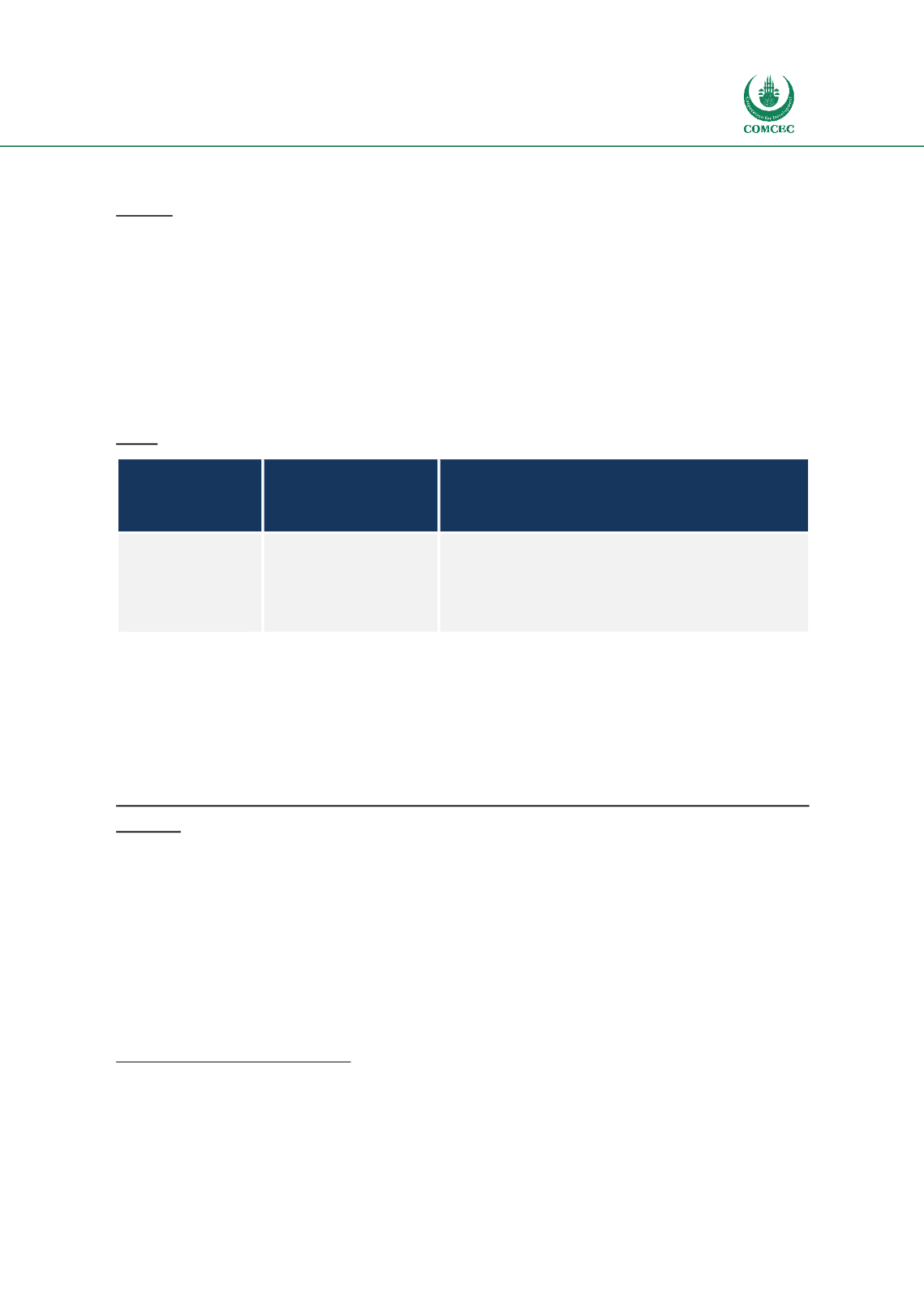

Special Economic Zones in the OIC Region:
Learning from Experience
157
Leather and Leather Products (Shoes).
Labour
Due to its location on the southeast of the Ethiopian capital Addis Ababa, Bole Lemi can draw on
a big and diversified labour base. The approximate size of the labour force in Addis Ababa is 2.03
million. 30% of this workforce will have primary education while the proportion of the labour
force with secondary education is estimated to be 15%. In order to ease hiring skilled workers,
collaborative relationships with technical vocational education and training (TVET) institutes
have been established. However the TVET institutions are still at early development stages and
not yet able to respond adequately to the labour needs.
Costs
Labour cost-
minimum wage
Electricity costs - kWh
Rental rates
Minimum wage in
Ethiopia is on
average 50 USD
119
US$0.03/kWh
120
USD 1/m2 in the first five years
USD 1,25/m2 rate the following 5 years.
121
Source: Various – see footnotes
While Ethiopia’s labour costs are not as low as some of the low-labour cost competitors, the cost
of utilities and rental rates are very low. Together with effective government agency
coordination and the low factor costs, Ethiopia has attracted significant investment in recent
years.
Markets being focused on (e.g. exports to particular countries/regions or focused on local
market)
The economic goals of the industrial park are to attract foreign investment, expand exports and
boost employment. As a result of economic focus and the types of incentives offered, 95% of the
products being produced in the industrial market are exported.
Bole Lemi promotes itself as destination for clothing, textile, apparel and shoe firms wanting
duty-free market access to USA through AGOA & to the EU through duty free access EBA
119
http://allafrica.com/stories/201411100627.html120
Invest in Ethiopia (Brochure) - EMERGING MANUFACTURING HUB IN AFRICA - Textiles and Apparel
121
http://www.investethiopia.gov.et/images/pdf/Factor_Costs_2014.pdf















